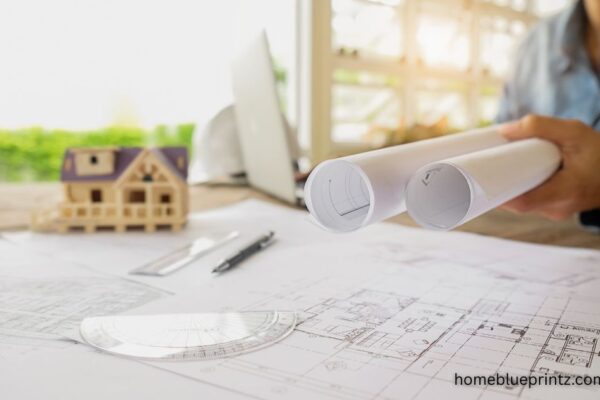Energy conservation has become one of the most crucial aspects of sustainable development. The Bureau of Energy Efficiency (BEE) plays a key role in promoting efficient energy usage across various sectors in India. One of the vital tools it utilizes to achieve this goal is the Bureau of Energy Efficiency Drawing, which serves as a blueprint for optimizing energy consumption in projects.
What is the Bureau of Energy Efficiency (BEE)?
The Bureau of Energy Efficiency (BEE) is a government agency under India’s Ministry of Power, established in 2002 as part of the Energy Conservation Act. Its primary mission is to promote efficient energy use and reduce overall energy consumption across various sectors. BEE develops policies, sets performance standards, and implements programs to encourage industries, buildings, and consumers to adopt energy-efficient technologies. Through initiatives like star ratings and energy audits, BEE plays a crucial role in driving India toward a more sustainable and energy-conscious future.
Understanding BEE Drawings
A BEE drawing represents a detailed design plan that outlines how energy is distributed and managed within a building or industrial setup. It focuses on optimizing energy usage through efficient layouts for electrical systems, lighting, HVAC, and insulation. These drawings ensure compliance with the Bureau of Energy Efficiency (BEE) standards, helping projects achieve sustainability goals while reducing energy waste and operational costs.
Purpose of BEE Drawings
The main goal of BEE drawings is to align project designs with national energy efficiency standards, ensuring optimal energy use and sustainability. These drawings promote smarter planning and compliance with environmental guidelines.
- Ensure adherence to BEE energy efficiency norms.
- Minimize energy wastage and operational costs.
- Support eco-friendly and sustainable construction practices.
Components of a BEE Drawing
A BEE drawing includes several key elements that illustrate how energy efficiency is achieved within a project. Each component plays a vital role in ensuring compliance and performance.
- Energy Flow Diagrams: Show how energy is distributed and utilized across systems.
- Equipment Efficiency Data: Includes details on motors, lighting, and HVAC units.
- Lighting and Electrical Layouts: Depict optimal placement for maximum efficiency.
- Thermal Insulation Design: Highlights areas that minimize heat loss or gain.
How BEE Drawings Are Created
Creating BEE drawings involves a systematic and detailed process to ensure energy efficiency in every aspect of design. It begins with conducting an energy audit to understand the existing consumption patterns, followed by collecting technical data on equipment and systems. Using advanced design software like AutoCAD or BIM, engineers then develop layouts that align with BEE standards. Finally, the drawings undergo compliance checks and validation to confirm they meet all energy conservation requirements.
Role of Certified Energy Auditors
Certified Energy Auditors play a crucial role in ensuring the accuracy and effectiveness of BEE drawings. They assess energy systems, identify potential improvements, and verify that all design elements comply with the Bureau of Energy Efficiency’s standards. Their expertise helps organizations reduce energy consumption, enhance operational efficiency, and achieve official BEE certification with confidence.
BEE Star Rating System
The BEE Star Rating System is a government initiative that helps consumers identify the energy efficiency of appliances and equipment. Rated from one to five stars, the system indicates how efficiently a product uses energy—where a five-star rating represents maximum efficiency and lower energy consumption. This simple yet effective rating method encourages people to choose energy-saving products, reducing electricity bills and supporting environmental sustainability.
Applications of BEE Drawings
BEE drawings are widely used to ensure energy efficiency across various sectors. They help optimize energy consumption, improve system performance, and promote sustainable practices. Key applications include:
- Industrial Projects: Streamlining energy use in manufacturing and production units.
- Commercial Buildings: Ensuring compliance with energy codes for offices and malls.
- Government Projects: Supporting energy-efficient infrastructure and public buildings.
Benefits of BEE Drawings
BEE drawings help optimize energy usage, reduce costs, and promote sustainable practices. Key benefits include:
- Cost Savings: Lower electricity bills through efficient system design.
- Energy Optimization: Better planning ensures minimal energy waste.
- Environmental Protection: Reduces carbon footprint and supports green initiatives.
BEE Drawing Approval Process
The BEE Drawing Approval Process involves a structured review to ensure that energy efficiency designs meet the Bureau of Energy Efficiency’s standards. First, the drawings are submitted along with all relevant technical documents for evaluation. BEE experts then analyze the plans for compliance, accuracy, and sustainability measures. Once the design meets all criteria, the project receives official certification, confirming its adherence to national energy efficiency guidelines.
Common Mistakes in BEE Drawings
Common Mistakes in BEE Drawings often lead to delays or non-compliance. Some frequent errors include:
- Inaccurate load calculations or energy estimations
- Use of non-compliant or outdated materials
- Missing or incomplete documentation and records
Technological Advancements in BEE Drawings
Recent technological developments have significantly improved the accuracy and efficiency of BEE drawings. Tools like Building Information Modeling (BIM), AI-driven energy analysis, and IoT-based monitoring systems help engineers design smarter, more energy-efficient layouts. These innovations allow real-time simulation, better load management, and predictive optimization, making energy planning more precise and reliable than ever before.
Challenges and Solutions
While BEE drawings enhance energy efficiency, several challenges remain, such as limited awareness and data inaccuracies. These can be addressed through proper training and adoption of modern tools.
- Limited awareness: Conduct workshops and awareness programs for professionals.
- Data inaccuracies: Use digital tools and automated systems for precise measurements.
- Slow adoption of technology: Encourage integration of BIM, AI, and IoT in energy planning.
Future of BEE Drawings
The future of BEE Drawings looks promising as technology and creativity continue to merge. With advancements in digital tools and design software, artists and designers can produce more precise, innovative, and visually appealing drawings. This evolution opens new opportunities in architecture, engineering, and artistic fields, making BEE Drawings an essential part of modern visual communication. As demand grows for high-quality and efficient designs, the scope and influence of BEE Drawings are set to expand further.
Conclusion
The Bureau of Energy Efficiency Drawing is not just a technical document it’s a roadmap toward sustainable development. By adopting these standards, industries and builders can save costs, reduce waste, and contribute to a cleaner environment. As the world embraces green technology, the role of BEE drawings will only continue to grow.
FAQs about bureau of energy efficiency drawing
- What is a Bureau of Energy Efficiency Drawing?
It’s a technical design that outlines how energy is used efficiently within a building or industrial setup following BEE standards. - Why is a BEE drawing important?
It ensures compliance with national energy conservation norms and helps reduce energy costs and emissions. - Who prepares a BEE drawing?
Certified Energy Auditors or qualified energy engineers usually prepare these drawings. - How can a project get BEE approval?
By submitting compliant energy efficiency drawings and documents to the Bureau of Energy Efficiency for review and certification. - Are BEE drawings mandatory for all buildings?
Not for all, but they are essential for government, large commercial, and industrial projects that aim for energy certification.








